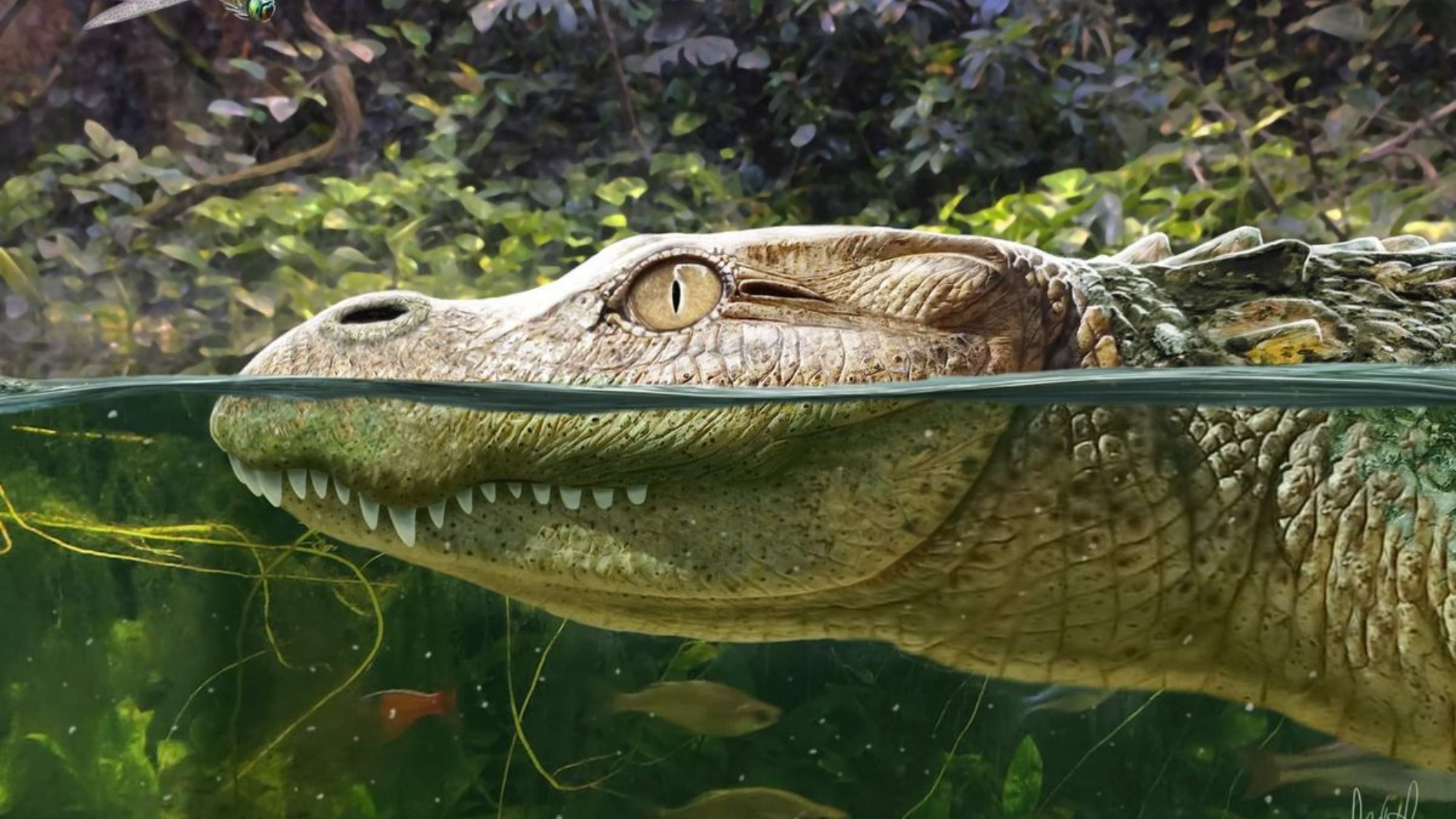

A fossilized skull first discovered 18 years ago turns out to belong to a new species of extinct alligator from Thailand called Alligator munensis (A. munensis). Named after the nearby Mun River, the new species is closely related to the Chinese alligator. Researchers from institutions in Germany and Thailand described this new finding in a study published July 13 in the journal Scientific Reports.
[Related: A rare, 95-million-year-old titanosaur skull found in Australia.]
The team dated the skull to younger than 230,000 years old and was found in Ban Si Liam in southern Thailand. It has some features that differentiate it from modern alligator species, including a short and broad snout, a tall skull, and fewer teeth than other alligators its size. A. munensis’ large tooth sockets towards the back of its mouth indicate that its large teeth may have been able to crush shells and snack on hard-shelled prey like snails and other animals.
The skull is also about 9 inches in length, an indication that this ancient reptile was not very large.
“The skull was really bizarre,” co-author and evolutionary biologist at the University of Tübingen in Germany Márton Rabi told New Scientist. “It was screaming that it has to be a new species.”
They investigated the evolutionary relationships of A. munensis by comparing its remains with 19 specimens from four extinct alligator species, alongside some living alligator species including the American alligator, Chinese alligator, and the spectacled caiman. The researchers also reviewed previously published research on the skeletal characteristics of, and evolutionary relationships between, alligator species.
There are some similarities between the skulls of A. munensis and the present day Chinese alligator, which is primarily found in the Anhui and Zhejiang provinces of eastern China. Both species have a small opening in the roof of the mouth, a ridge on the top of the skull, and a raised ridge behind their nostrils.
[Related: Why scientists gave vaccines to farmed crocodiles.]
The team believes that these extinct and living species are closely related, and likely shared a common ancestor that lived in the lowlands of the Yangtze-Xi and Mekong-Chao Phraya river systems. A. munensis and the Chinese alligator may have evolved independently due to increases in the elevation of the southeastern Tibetan Plateau between 23 and 25 million years ago.
“One of the more intriguing questions is to know when was more precisely the time of the split between A. munensis and A. sinensis [Chinese alligator],” study co-author and researcher at Eberhard Karls Universität Tübingen Gustavo Darlim, told Gizmodo. “We are currently working on developing this analysis that would help us to better understand not only how Alligator got to Asia, but also the dispersal of Alligator within Asia.”
